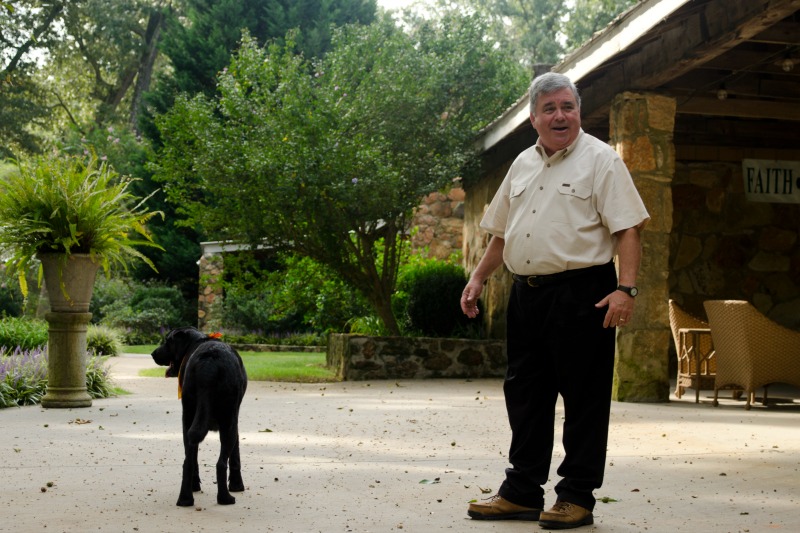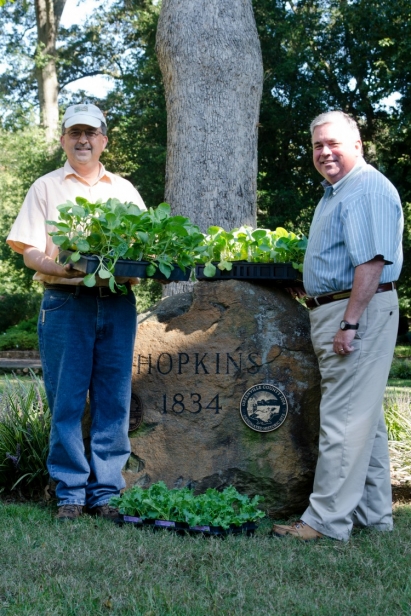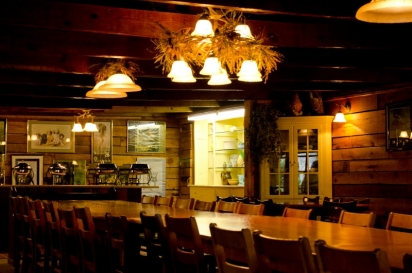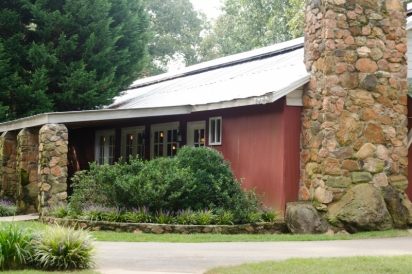Stewards of History: The Brothers of Hopkins Farm
Turning into Hopkins Farm off of Fork Shoals Road is like going back in time. Past the massive iron gates flanked by daylilies, a dirt road winds between rows of pecan trees, past a deep red barn to a house that has sat on these 400 acres since 1840. Inside, natural light illuminates the home’s original furnishings in heirloom shades of blush and blue. One by one, the Hopkins family emerges to greet me, as inviting as their storied property.
John is sturdy, animated, self-assured. Like my own father, he is a storehouse of facts: An etching in stone of a stick figure donning a hat signifies that a path across their land was used by both Native Americans and white settlers, and it’s the best trail marker preserved in the state. The Battle of the Great Canebrake was fought on their land during the Revolutionary War, and the rows of pecan trees at the entrance were planted to celebrate the battle’s centennial. The cast of Gone With the Wind was photographed under a tree on the property in 1939, so now Washington protects that tree from being cut down. John seems, as we stroll over to the old machine shed, almost indistinguishable from the land he narrates. Built in 1947, the shed was recently converted to a pavilion used for al fresco weddings and other events. The original rock columns still support a corrugated roof, but the ground has been paved, and instead of tractors, the shed now houses tables and chairs to seat a hundred people.
I sit with John and his wife Carol in folding chairs under the pavilion. John’s brother Agnew doesn’t sit; we’ve fetched him from the chicken coop, and he’s restless, averse to attention. In fact, he seems more comfortable with Blackie the lab than with us humans. “Holler when it’s my turn,” he says, turning to walk away, and his brother promptly responds, “It’s your turn!” I get the sense Agnew doesn’t want to talk—he wants to work. It’s not until I finally get him started on sustainable food practices that he won’t stop talking. Even so, it’s as if he’s pulled by some invisible force back to his work on the farm; every few minutes he drifts in the direction of his chickens and eggplants, his voice fading into a mumble.
As it turns out, both brothers agree that the invisible force—the inexplicable pull to return to the farm on which they grew up—is absolutely real. Decades after each brother left home, one to pursue a career in business and one to attend culinary school, both men returned with their families to Hopkins Farm, where their ancestors have lived for seven generations.
And even though these people remind me of my family, I can’t help but wonder if they’re the kind of people who remind everyone of their family.
The machine-shed-turned-pavilion emerges as the perfect metaphor for the brothers’ approach to the farm. John calls their stewardship “adaptive reuse,” a method that includes the repurposing of existing structures and resources to meet the needs of this generation of Hopkinses. For years the family backed the tractors out of the shed to hold church picnics or holiday gatherings. Eventually, people started asking to use the property for other events, and John’s wife and sisters wanted the shed kept empty. Finally, John agreed to build a new machine shed and, as he put it, “let them have it.” Thus in 2009, Timberock at Hopkins Farm was born, a brand new business on the centuries-old property.
The dining hall is another perfect example of their appreciation for history; what now functions as an event venue lived its first life as an expansive chicken house for thousands of birds. They preserved the building using red oaks lost in the drought several years ago, lining the walls with one-inch boards they cut themselves. Despite the updates, the building’s history is evident in its low ceiling and small holes along the walls, where staples were used to affix chicken wire. First a home for chickens, then a kitchen and dining area for family reunions, and finally a unique event venue for the entire upstate—Timberock has evolved beautifully.
The brothers’ desire to use resources responsibly extends to their relationship with their poultry and vegetables. Despite increased expenses, they choose to farm organically. Many of their chickens are deep red heritage breed New Hampshire chickens whose protected bloodline can be traced back a hundred years. Ark of Taste birds are on the brink of extinction, but Agnew, having been a bird-lover his entire life, believes they are worth preserving. The family remembers that Agnew took a chicken to show-and-tell in second grade. Another time, John tells me, their mother received a bizarre phone call about a bird at the airport. No one except eight-year-old Agnew understood: he had managed to order “some partridge or pheasant” for delivery. Agnew confesses he loves watching the movements of chickens and turkeys. “Turkeys are especially social,” he assures me.
When their young chickens have matured, Agnew and the head of the Sustainable Poultry Network will examine each bird to determine which possess the best genetic traits for the American standard of perfection. These birds will be retained and the remaining birds harvested. Their superior-tasting eggs are sold to Greenville venues such as Happy Cow Creamery and American Grocery.
Later we stroll through the garden, where John and Agnew point out many of the crops to tell me where they are eventually headed. The romaine and red cell lettuces are for Trevor Higgins at Roost. Many of the herbs are grown at the specific request of local chefs. Agnew is himself a formally trained chef who taught at Johnson and Wales for 15 years and worked at Magnolia in Charleston for eight years. John worked for Owens Corning for 26 years, and the combination of sincere foodie and shrewd businessman is a perfect one for running Hopkins Farm. Although neither brother relishes cleaning out chicken coops, Agnew answers my question about the hardest part of maintaining the farm this way: “Right now I can’t think of anything bad. I’m just so happy to be here.” This from a man who changes his shirt at least three times every day because it is sopping wet with sweat.
We can’t walk ten feet on this property without stumbling upon another story, another artifact with decades of history behind it. Hopkins Farm is recognized on the National Registry of Historic Places for not one but three reasons: as training grounds for soldiers during the Revolutionary War, as an Indian Trading Post, and as the seventh-generation family farm it is today. John and Agnew take their responsibility to protect this land seriously. And yet they don’t see themselves as owners of the farm at all; they are merely taking their turn as “stewards.” It is, perhaps counter-intuitively, their loose hold on the land that imbues their decisions with sacredness. The living Hopkinses are merely part of what John calls the “continuum of responsibility.”
Part of their responsibility is creating a farm that is not burdensome to future generations. Both men are habitually forward-thinking, anticipating that in 50 years the farm will be a “fully-sustainable, profitable, award-winning poultry farm.” Their belief that agriculture plays a crucial role in the health of our society goes deep; it’s what brought them home despite their father’s warning that “agriculture is not a money maker.” Encouraged by the resurgence of the food scene in downtown Greenville, John and Agnew are hopeful that the farm-to-table movement will continue to allow for conservation of farms like their own. It is for this reason, John says, “There is always more to do. We never have a rest.” It’s said with a smile.
Timberock at Hopkins Farm
3717 Fork Shoals Road
Simpsonville
864-907-0528
www.timberockathopkinsfarm.com









